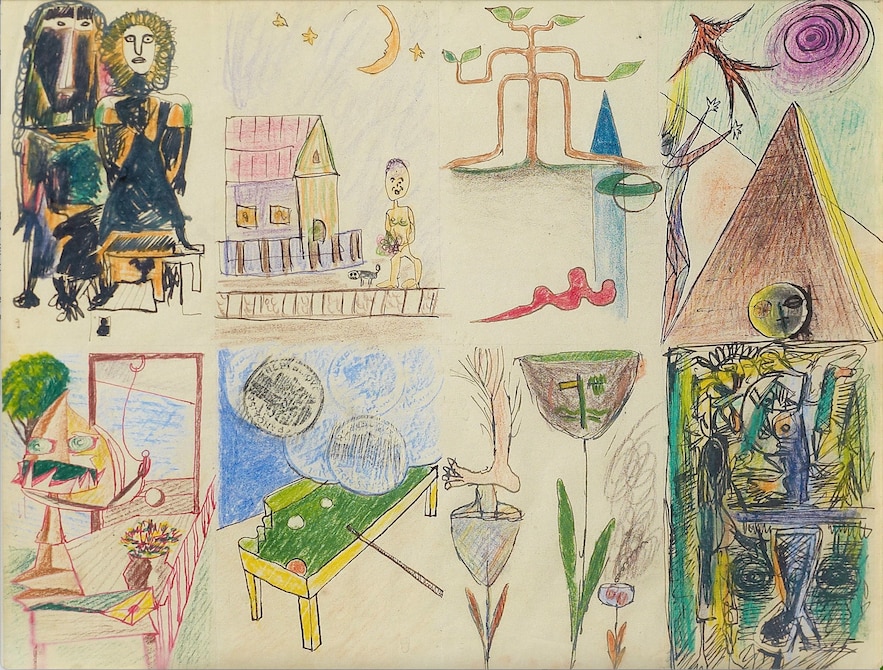He landed in Marseille on August 14, 1940, with only the moral support of the first lady Eleanor Roosevelt, $3,000 and a list of 200 names, all carried by people outlawed by Nazism and the Vichy laws. Commissioned by the brand new Emergency Rescue Committee, the American journalist was sent here for three weeks. He would ultimately stay a little over a year in the Phocaean city, with one goal: to allow these political opponents and Jews to flee Europe to the United States.
In thirteen months of fierce combat, Varian Fry will save nearly 2000. Among them, many artists identified as “degenerate” by the Hitler regime. Through the singularity and the works of these figures linked to surrealism, whose centenary is being celebrated this year Manifest, The Place of Memory in Chambon-sur-Lignon (Haute-Loire) retraces Fry’s Marseille epic under the enlightened curatorship of Emmanuelle Polack, a historian specializing in art during the Occupation.
Portrait of Varian Fry, Marseille, 1940-1941.
/ © Shoah Memorial / Coll. Jean Bernard
He witnessed a pogrom
In the summer of 1940, Varian Fry, 32, was a convinced anti-Nazi without illusions: five years earlier, while reporting in Berlin, he had witnessed a pogrom, an event that was the founding element of his commitment. Upon his arrival in Marseille, a port open to the Mediterranean that had become an antechamber to exile, he transformed his attic in the Splendide Hôtel, on Boulevard d’Athènes, into a reception office for German, Austrian, Polish, Czech and French refugees.
With the number of candidates for the crossing flocking, the journalist rents the Air-Bel villa, in the Pomme district. This large country house, renamed “Château Espère-Visa” by its occupants, thus sees the couples formed by André Breton and Jacqueline Lamba, Marc and Bella Chagall, Max Ernst and Peggy Guggenheim, but also Jean Arp, Hans Bellmer, Marcel Duchamp, and André Masson rub shoulders, for a long stay or the space of a Sunday. While waiting for a life-saving boat, to kill time, they sign collective creations: the revisitation of the exquisite corpse, launched by Prévert in 1925, or the invention of the game of Marseille, the cards of which they draw in watercolor.

Collective drawing by André Breton, Oscar Dominguez, Wifredo Lam and Jacqueline Lamba, 1940.
/ © ADAGP 2024
During the visit of Marshal Pétain in December 1940, like thousands of other people then considered “suspect”, Varian Fry and his guests were arrested and detained on the prison ship Sinaia, but released after three days thanks to the intervention of the American vice-consul Hiram Bingham IV. During these thirteen months, the latter was an essential cog in the saving enterprise initiated by his compatriot, delivering, under the nose of an apathetic US State Department anxious not to fall out with Vichy, an incalculable number of visas – real or fake – to the refugees.
Closely monitored, Fry was eventually expelled from France on September 16, 1941. Back across the Atlantic, he never stopped alerting public opinion about the fate of Jews in Europe in the face of a distrustful America that struggled to recognize its hero as such. The only honor he received during his lifetime was the rank of knight of the Legion of Honor that France awarded him in 1967, a few months before his death. Twenty years later, Varian Fry became, posthumously, the first American “Righteous Among the Nations,” while U.S. Secretary of State Warren Christopher officially admitted that he had not received the support he deserved from his country. A belated tribute to the man who spoke of “the indelible mark left by this year spent leading [sa] own little war”.
